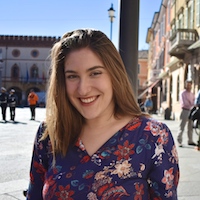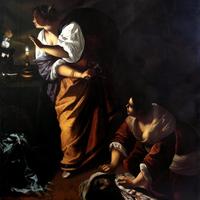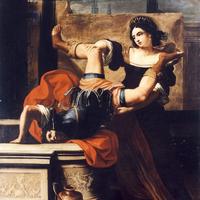More about Capodimonte Museum
Works at Capodimonte Museum

Contributor
Sometimes you need an art museum instead of a hunting lodge. Just ask King Charles.
The National Museum of Capodimonte is an art museum that just happens to call a Bourbon palace in Naples, Italy its home. Originally, in 1738, King Charles VII of Naples (more commonly known as King Charles of Spain because one country wasn’t good enough for Chuck) thought, “Hmm, I’d like a large hunting lodge on a hill, but my current palace just isn’t big enough to house my fabulous art collection. Looks like it’ll have to be a new palace for the Farnese art collection that mummy left me instead!” Good call, Chuck.
Chuck’s museum carried Elisabetta Farnese’s collection until Napoleon went on his conquering rampage. In 1799, many of the most valuable works were transported out of Italy by King Ferdinand as he fled the French power. The remaining unlucky pieces of artwork were looted by French troops. Once Napoleon was imprisoned and the King Ferdinand returned to Naples he decided to redecorate the palace and add a contemporary art wing. In the 1860s the museum came to include a collection of historic firearms and weapons. Today the museum boasts work by artists such as Titian, Caravaggio, El Greco, and even Andy Warhol.
Sources
- “Museo di Capodimonte.” Museo e Real Bosco Capodimonte. 18 June 2017. http://www.museocapodimonte.beniculturali.it
- “National Museum and Galleries of Capodimonte.” Encyclopedia Britannica. 18 June 2017. https://www.britannica.com/topic/National-Museum-and-Galleries-of-Capod…
Featured Content
Here is what Wikipedia says about Museo di Capodimonte
40°52′01.22″N 14°15′01.92″E / 40.8670056°N 14.2505333°E
Museo di Capodimonte is an art museum located in the Palace of Capodimonte, a grand Bourbon palazzo in Naples, Italy designed by Giovanni Antonio Medrano. The museum is the prime repository of Neapolitan painting and decorative art, with several important works from other Italian schools of painting, and some important ancient Roman sculptures. It is one of the largest museums in Italy. The museum was inaugurated in 1957.
Check out the full Wikipedia article about Museo di Capodimonte















